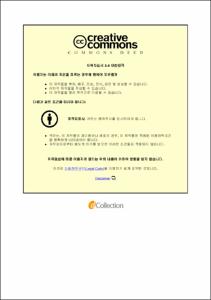어류 개체군의 상대적 크기 추정을 위한 한반도 연근해 저층 트롤 조사 자료의 분석
- Alternative Title
- Analysis of Bottom-Water Trawl Survey Data from Korean Coast Areas for Inference of the Relative Sizes of Fish Populations
- Abstract
- The Korean National Institute of Fisheries Science (NIFS) has biannually (spring and fall, respectively) deployed a bottom trawl survey along the coastal areas for last decade, taking samples on a regular basis. Although the objectives of the survey should include estimating the relative sizes of groundfish populations, NIFS has not yet officially reported the estimates of the relative sizes as well as has not evaluated the uncertainty of the estimates. The objectives of this thesis were to show how to infer the relative size of a fish population, applying three different sampling techniques (namely simple, stratified and systematic sampling) with different observation units to the NIFS survey data, and to compare those three techniques in bias and precision. For demonstration purposes, I used data on 11 species, which had been collected by the 2011-2015 surveys. Those species were Pacific cod (Gadus macrocephalus), Chub mackerel (Scomber japonicus), Silver croaker (Pennahia argentata), Pacific herring (Clupea pallasii), Largehead hairtail (Trichiurus lepturus), Small yellow croaker (Larimichthys polyactis), Blackfin flounder (Glyptocephalus stelleri), Red tilefish (Branchiostegus japonicus), Black scraper (Thamnaconus modestus), Mottled skate (Raja pulchra) and Swimming crab (Portunus trituberculatus). The primary results were different in bias and precision by observation unit as well as by sampling technique. Under the observation unit of ‘nested Grid’, the relative sizes of those 11 populations were not different by the sampling technique in all years. Overall, the simple sampling technique led the lowest precision in estimation (i.e., widest variation around estimates of the relative population sizes), followed by the stratified and systematic sampling techniques in order. Under the observation unit of ‘swept area’, the relative sizes of those 11 populations estimated by the stratified sampling technique were larger than those estimated by the other two techniques in all years, which were not different in the estimation. Generally, precision in the estimation made by the systematic sampling was always better (i.e., narrower variances around estimates) than that by the simple sampling technique. However, precision from the stratified sampling technique did not show a consistent behavior when being compared with the other techniques.
- Issued Date
- 2018
- Awarded Date
- 2018.2
- Type
- Dissertation
- Keyword
- Sampling techniques Bottom trawl survey Survey index Uncertainty of the estimates Observation units
- Publisher
- 부경대학교
- Affiliation
- 부경대학교 대학원
- Department
- 대학원 해양생물학과
- Advisor
- 현상윤
- Table Of Contents
- I. 서론 1
II. 자료 및 방법 7
1. 과학조사 자료 7
2. 예망면적의 계산 10
3. 통계적 분석 14
가. 단순 추출법 21
나. 층화 추출법 23
다. 계통 추출법 25
4. 관측단위의 변화 30
가. 관측단위: 소해구 30
나. 관측단위: 예망면적 38
III. 결론 44
IV. 고찰 112
V. 사사 116
VI. 참고문헌 118
- Degree
- Master
- Files in This Item:
-
-
Download
 어류 개체군의 상대적 크기 추정을 위한 한반도 연근해 저층 트롤 조사 자료의 분석.pdf
기타 데이터 / 1.4 MB / Adobe PDF
어류 개체군의 상대적 크기 추정을 위한 한반도 연근해 저층 트롤 조사 자료의 분석.pdf
기타 데이터 / 1.4 MB / Adobe PDF
-
Items in Repository are protected by copyright, with all rights reserved, unless otherwise indicated.